Do you have a question about the Datalogic Hand-Held Devices II and is the answer not in the manual?
Details the various status indicators (LEDs, Beeper, Good Read Spot) and their meanings for reader operation.
Guide to selecting the appropriate communication interface (USB, RS232, Wedge, Pen, IBM 46xx) for the reader.
Explains compatibility and setup for USB interfaces, including driver loading and start-up procedures.
Details the procedure for selecting RS232 interface options, including restore default and POS systems.
Covers Wedge interface options for various keyboard types and terminals, including ALT mode.
Instructions for selecting the Pen Emulation interface, including default restoration.
Procedure for selecting IBM 46xx interface, specifying protocol options like 4501 and 1520.
Configuration settings for USB interfaces (USB-COM, USB-KBD, USB-IBM) including handshaking and FIFO.
Configuration settings for RS232 communication, covering baud rate, parity, data bits, and handshaking.
Configuration settings for Wedge interfaces, including keyboard nationality, caps lock, and num lock.
Configuration settings for Pen Emulation, covering operating mode, output pulse, and overflow.
Configuration for IBM 46xx devices, focusing on data formatting and transmission.
Defines data formatting rules: code identifiers, headers, terminators, and character replacement.
Settings to manage power consumption: scan rate, sleep state, timeouts, and standby mode.
Controls reader behavior: operation modes, trigger signals, beeper settings, and aiming systems.
Adjustments for decoding performance: ink spread, overflow control, interdigit control, and safety.
Enables or disables specific barcode symbologies and their options, including families and check digits.
Configures advanced data manipulation: concatenation, field division, and custom formatting rules.
Detailed explanations of handshaking, ACK/NACK protocol, FIFO, and RX Timeout for USB-COM and RS232.
Technical details on Pen emulation parameters: minimum output pulse, conversion to Code 39, and overflow.
Technical details on IBM 46xx data formatting, including conversion and standard format options.
Technical details on header/terminator selection and extended keyboard conversion for Wedge interface.
Technical details on sleep state, USB suspend, enter sleep timeout, and standby modes.
Technical details on operation modes, trigger signals, reads per cycle, safety time, and aiming systems.
Technical details on ink spread, overflow control, interdigit control, and decoding safety.
Lists commands for restoring defaults, transmitting software release, and device configuration via serial strings.
Procedure for copying reader configuration from a master to a slave device using RS232.
Reference table for default RS232 and Data Format parameters across different POS system modes.
Instructions for upgrading device firmware using the DL Sm@rtSet utility via RS232 or USB.
Reference list of serial configuration strings for Enter/Exit commands and Interface Selection.
Strings for configuring USB parameters: Handshaking, FIFO, Keyboard Nationality, Delays, Control Char Emulation.
Strings for configuring RS232 parameters: Baud rate, Parity, Data bits, Handshaking, FIFO, Delays.
Strings for configuring Wedge parameters: Keyboard Nationality, Caps Lock, Num Lock, Delays, Control Char Emulation.
Strings for configuring Pen parameters: Operating mode, Minimum output pulse, Output level, Idle level, Overflow.
Strings for configuring IBM 46xx Data Formatting.
Strings for configuring Data Format: Code Identifier, Custom Code Identifier, Headers, Terminators.
Strings for configuring Data Format: Code Length Tx, Field Adjustment, Character Replacement.
Strings for configuring Power Save: Scan Rate, Sleep State/USB Suspend, Standby.
Strings for configuring Reading Parameters: Operation modes, Trigger signals, Beeper settings, Aiming Systems.
Strings for configuring Decoding Parameters: Ink-spread, Overflow control, Interdigit control, Decoding Safety.
Strings for configuring Code Selection: EAN/UPC, Code 39, 2/5, and other code families.
Strings for configuring Code Selection: Code 39, 2/5, and other code families.
Strings for configuring Code Selection: Codabar, Code 128, Code 93, MSI.
Strings for configuring Code Selection: Plessey, Telepen, Delta IBM, Code 11, Code 16K, Code 49, RSS Codes.
Details the various status indicators (LEDs, Beeper, Good Read Spot) and their meanings for reader operation.
Guide to selecting the appropriate communication interface (USB, RS232, Wedge, Pen, IBM 46xx) for the reader.
Explains compatibility and setup for USB interfaces, including driver loading and start-up procedures.
Details the procedure for selecting RS232 interface options, including restore default and POS systems.
Covers Wedge interface options for various keyboard types and terminals, including ALT mode.
Instructions for selecting the Pen Emulation interface, including default restoration.
Procedure for selecting IBM 46xx interface, specifying protocol options like 4501 and 1520.
Configuration settings for USB interfaces (USB-COM, USB-KBD, USB-IBM) including handshaking and FIFO.
Configuration settings for RS232 communication, covering baud rate, parity, data bits, and handshaking.
Configuration settings for Wedge interfaces, including keyboard nationality, caps lock, and num lock.
Configuration settings for Pen Emulation, covering operating mode, output pulse, and overflow.
Configuration for IBM 46xx devices, focusing on data formatting and transmission.
Defines data formatting rules: code identifiers, headers, terminators, and character replacement.
Settings to manage power consumption: scan rate, sleep state, timeouts, and standby mode.
Controls reader behavior: operation modes, trigger signals, beeper settings, and aiming systems.
Adjustments for decoding performance: ink spread, overflow control, interdigit control, and safety.
Enables or disables specific barcode symbologies and their options, including families and check digits.
Configures advanced data manipulation: concatenation, field division, and custom formatting rules.
Detailed explanations of handshaking, ACK/NACK protocol, FIFO, and RX Timeout for USB-COM and RS232.
Technical details on Pen emulation parameters: minimum output pulse, conversion to Code 39, and overflow.
Technical details on IBM 46xx data formatting, including conversion and standard format options.
Technical details on header/terminator selection and extended keyboard conversion for Wedge interface.
Technical details on sleep state, USB suspend, enter sleep timeout, and standby modes.
Technical details on operation modes, trigger signals, reads per cycle, safety time, and aiming systems.
Technical details on ink spread, overflow control, interdigit control, and decoding safety.
Lists commands for restoring defaults, transmitting software release, and device configuration via serial strings.
Procedure for copying reader configuration from a master to a slave device using RS232.
Reference table for default RS232 and Data Format parameters across different POS system modes.
Instructions for upgrading device firmware using the DL Sm@rtSet utility via RS232 or USB.
Reference list of serial configuration strings for Enter/Exit commands and Interface Selection.
Strings for configuring USB parameters: Handshaking, FIFO, Keyboard Nationality, Delays, Control Char Emulation.
Strings for configuring RS232 parameters: Baud rate, Parity, Data bits, Handshaking, FIFO, Delays.
Strings for configuring Wedge parameters: Keyboard Nationality, Caps Lock, Num Lock, Delays, Control Char Emulation.
Strings for configuring Pen parameters: Operating mode, Minimum output pulse, Output level, Idle level, Overflow.
Strings for configuring IBM 46xx Data Formatting.
Strings for configuring Data Format: Code Identifier, Custom Code Identifier, Headers, Terminators.
Strings for configuring Data Format: Code Length Tx, Field Adjustment, Character Replacement.
Strings for configuring Power Save: Scan Rate, Sleep State/USB Suspend, Standby.
Strings for configuring Reading Parameters: Operation modes, Trigger signals, Beeper settings, Aiming Systems.
Strings for configuring Decoding Parameters: Ink-spread, Overflow control, Interdigit control, Decoding Safety.
Strings for configuring Code Selection: EAN/UPC, Code 39, 2/5, and other code families.
Strings for configuring Code Selection: Code 39, 2/5, and other code families.
Strings for configuring Code Selection: Codabar, Code 128, Code 93, MSI.
Strings for configuring Code Selection: Plessey, Telepen, Delta IBM, Code 11, Code 16K, Code 49, RSS Codes.
| Brand | Datalogic |
|---|---|
| Model | Hand-Held Devices II |
| Category | Barcode Reader |
| Language | English |

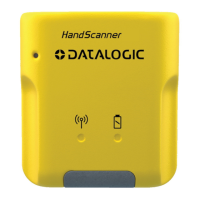
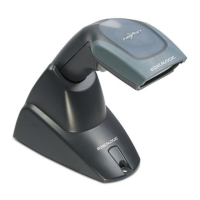

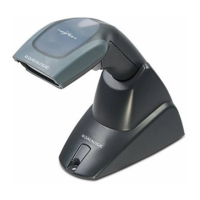
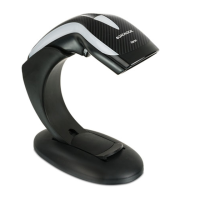
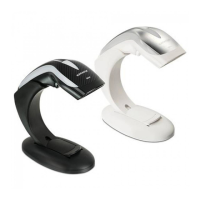

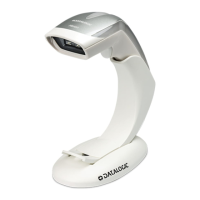


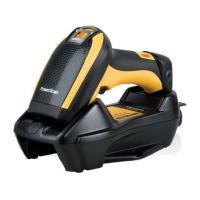
